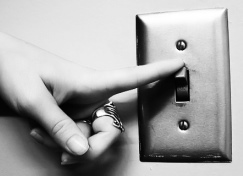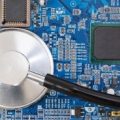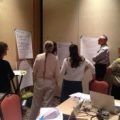
This post was written by Aditi Ramaswami, a former member of our team.
Earlier this summer, I went on a weeklong road trip with a good friend, and we challenged ourselves to leave technology behind. With a giant Colorado atlas and a phone for emergency use only, we set off to reconnect with the world in a more meaningful way. This created a space uninhibited by the sometimes grueling nature of technology. It created a space for authentic engagement—with each other, with strangers and new friends, and with our surroundings.
Along the way, we met and interacted with a diverse cast of characters with vastly different lives and experiences. We met a man from Tibet who had walked from Colorado to the Hanuman Temple in Taos, New Mexico on a spiritual journey. We were taken in by kind strangers in Durango who fed us a home-cooked meal (a welcome reprieve from our diet of Clif bars) and provided a guided tour of their hometown. We developed both brief and (hopefully) long-lasting relationships that enriched our lives in ways being tethered to technology can hinder.
At the Coalition for the Medically Underserved, we work on behalf of people from similarly varied walks of life. To be effective, we must elevate Coloradans’ needs and interests to a statewide level and promote systems change. However, to be authentic, we can’t guess or assume what those needs and interests are—we need to give Coloradans whose voices aren’t often heard a chance to tell their story, and commit to listening sincerely. We need to be open to learning and understanding the diversity of health experiences so we can connect them to the systems change dialogue. And, we think health care in general could use a whole lot more of this, from providers to insurance plans.
Technology has a role in listening to patients and elevating their stories, but as we become more dependent on it, we need to make sure this dependence does not hinder the authentic human connection. This is especially important as health care becomes more focused on digital health technologies, tools, and strategies that patients can use to connect with providers, access health information, check their vital signs, and perform other health-related activities. Since technology is how we stay connected these days, it behooves us to find ways to translate what we know about authentic patient engagement—to the extent possible—to the technological tools at our disposal.
Patient engagement, both in digital health and systems change efforts, is what we’re exploring at our fundraising luncheon, Health is Patients, later this month. Thomas Goetz, our keynote speaker, will share lessons from his work to put health care consumers back in control of their health, much of which has involved innovative uses of technology. I invite you to join us for this important conversation about how we can stay authentically connected to those we serve.
I also invite you to spend some technology-free time this week—you won’t regret it!




